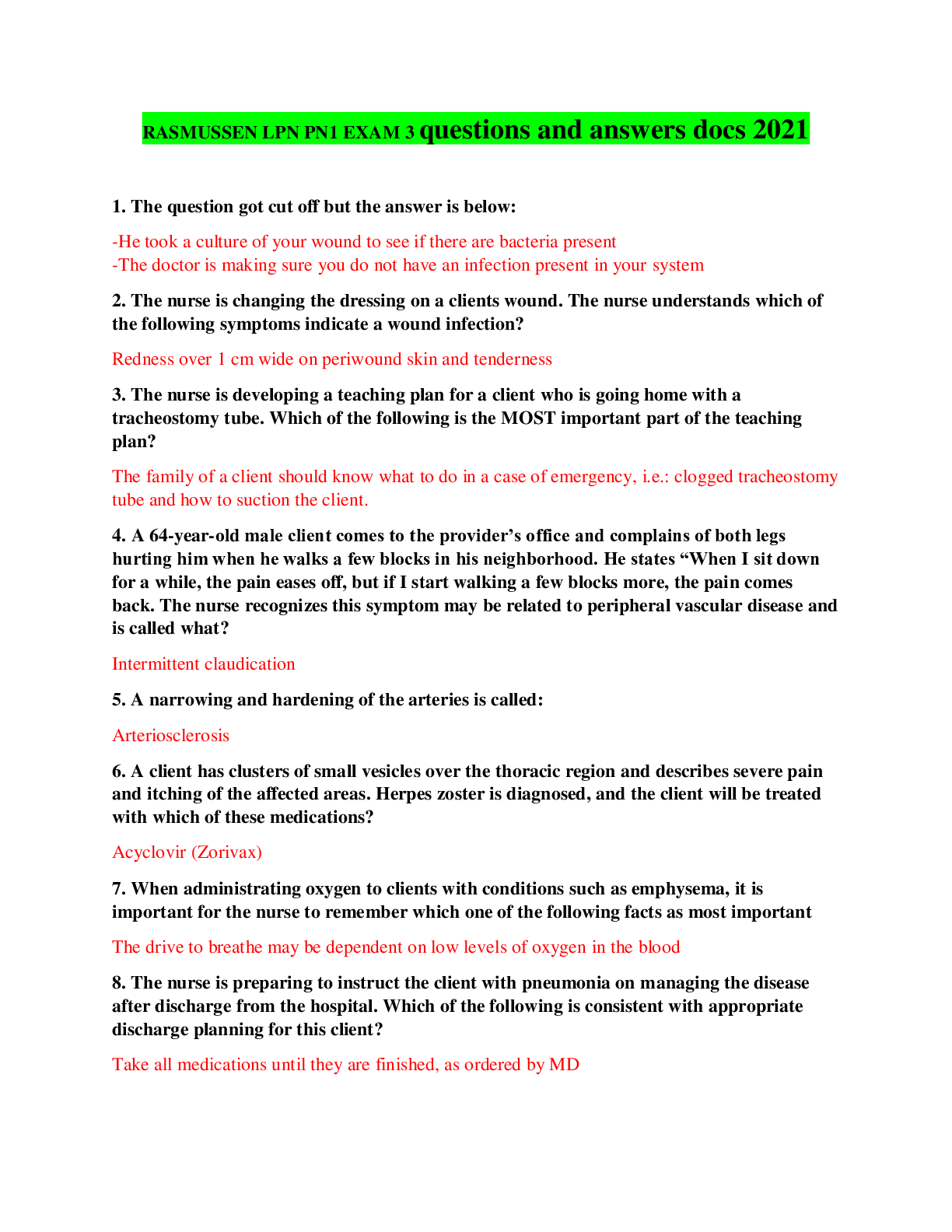NUR 221 Exam 3 Questions & Answers, Actual Test
Document Content and Description Below
NUR 221 Exam 3 Questions & Answers, Actual Test-The nurse is caring for a patient admitted with hypovolemic shock. The nurse palpates thready brachial pulses but is unable to auscultate a blood pressu... re. What is the best nursing action? A. Assess the blood pressure palpation B. Estimate the systolic pressure as 60 mm Hg. C. Obtain an electronic blood pressure monitor. D. Record the blood pressure as "not assessable." - A. Assess the blood pressure palpation The nurse has just completed an infusion of a 1000 mL bolus of 0.9% normal saline in a patient with severe sepsis. One hour later, which laboratory result requires immediate nursing action? A. Creatinine 1.0 mg/dL B. Lactate 6 mmol/L C. Potassium 3.8 mEq/L D. Sodium 140 mEq/L - B. Lactate 6 mmol/L The nurse has been administering 0.9% normal saline intravenous fluids as part of early goal- directed therapy protocols in a patient with severe sepsis. To evaluate the effectiveness of fluid therapy, which physiological parameters would be most important for the nurse to assess? A. Breath sounds and capillary refill B. Blood pressure and oral temperature C. Oral temperature and capillary refill D. Right atrial pressure and urine output - D. Right atrial pressure and urine output A patient is admitted to the critical care unit following coronary artery bypass surgery. Two hours postoperatively, the nurse assesses the following information: pulse is 120 beats/min; blood pressure is 70/50 mm Hg; pulmonary artery diastolic pressure is 2 mm Hg; cardiac output is 4 L/min; urine output is 250 mL/hr; chest drainage is 200 mL/hr. What is the best interpretation by the nurse? A. The assessed values are within normal limits. B. The patient is at risk for developing cardiogenic shock. C. The patient is at risk for developing fluid volume overload. D. The patient is at risk for developing hypovolemic shock. - D. The patient is at risk for developing hypovolemic shock. A patient is admitted after collapsing at the end of a summer marathon. She is lethargic, with a heart rate of 110 beats/min, respiratory rate of 30 breaths/min, and a blood pressure of 78/46 mm Hg. The nurse anticipates administering which therapeutic intervention? A. Human albumin infusion B. Hypotonic saline solution C. Lactated Ringer's bolus D. Packed red blood cells - C. Lactated Ringer's bolus The nurse is caring for a patient in the early stages of septic shock. The patient is slightly confused and flushed, with bounding peripheral pulses. Which hemodynamic values is the nurse most likely to assess? A. High pulmonary artery occlusive pressure and high cardiac output B. High systemic vascular resistance and low cardiac output C. Low pulmonary artery occlusive pressure and low cardiac output D. Low systemic vascular resistance and high cardiac output - D. Low systemic vascular resistance and high cardiac output The nurse is caring for a patient admitted with severe sepsis. Vital signs assessed by the nurse include blood pressure 80/50 mm Hg, heart rate 120 beats/min, respirations 28 breaths/min, oral temperature of 102° F, and a right atrial pressure (RAP) of 1 mm Hg. Assuming physician orders, which intervention should the nurse carry out first? A. Acetaminophen suppository B. Blood cultures from two sites C. IV antibiotic administration D. Isotonic fluid challenge - D. Isotonic fluid challenge Which patient being cared for in the emergency department is most at risk for developing hypovolemic shock? A. A patient admitted with abdominal pain and an elevated white blood cell count B. A patient with a temperature of 102° F and a general dermal rash C. A patient with a 2-day history of nausea, vomiting, and diarrhea D. A patient with slight rectal bleeding from inflamed hemorrhoids - C. A patient with a 2-day history of nausea, vomiting, and diarrhea The nurse is caring for a patient admitted with cardiogenic shock. Hemodynamic readings obtained with a pulmonary artery catheter include a pulmonary artery occlusion pressure (PAOP) of 18 mm Hg and a cardiac index (CI) of 1.0 L/min/m 2 . What is the priority pharmacological intervention? A. Dobutamine B. Furosemide C. Phenylephrine D. Sodium nitroprusside - A. Dobutamine [Show More]
Last updated: 5 months ago
Preview 5 out of 69 pages

Loading document previews ...
Buy this document to get the full access instantly
Instant Download Access after purchase
Buy NowInstant download
We Accept:

Also available in bundle (1)
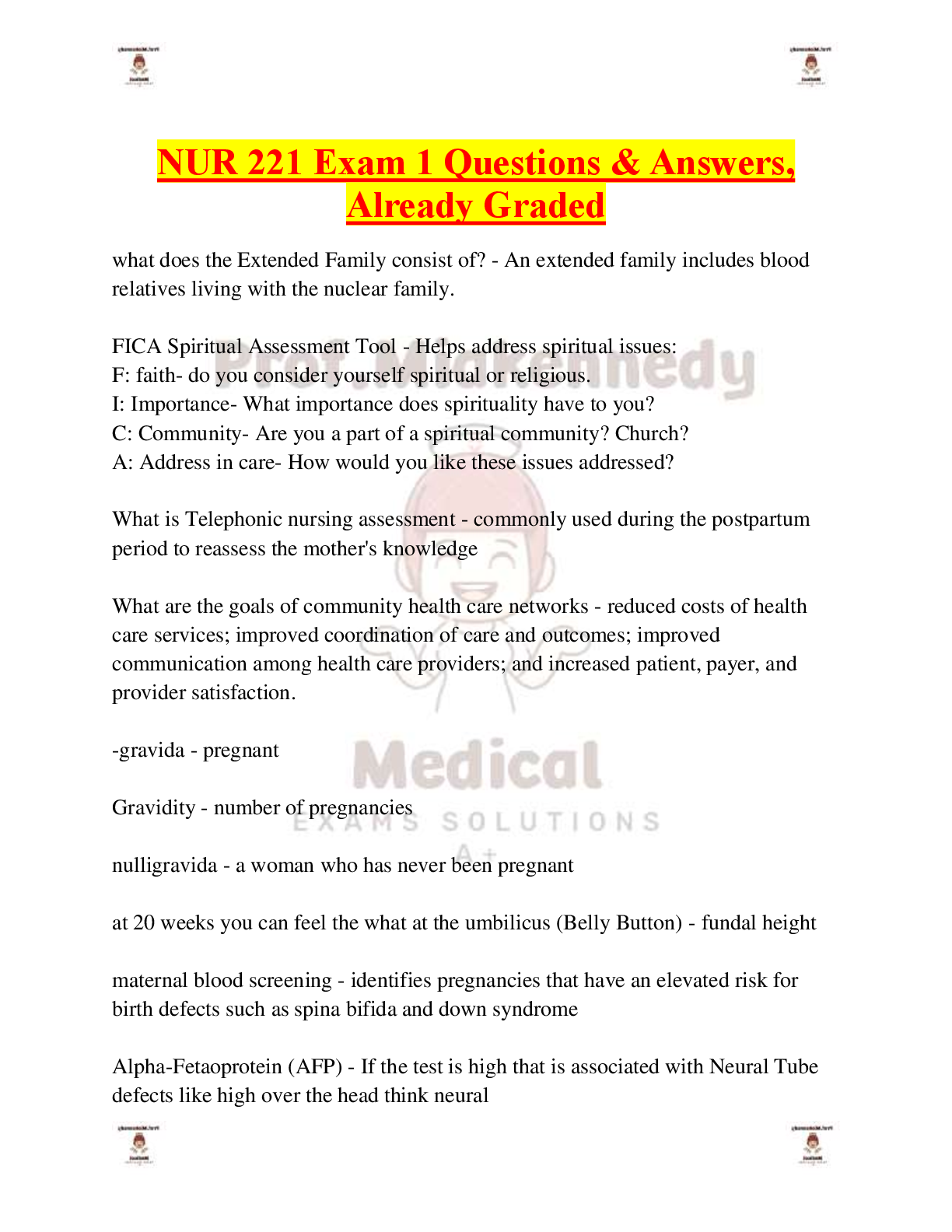
BUNDLE: NUR 221 EXAMS QUESTIONS & ANSWERS (FROM ACTUAL TESTS) ALL SCORED A+
BUNDLE: NUR 221 EXAMS QUESTIONS & ANSWERS (FROM ACTUAL TESTS) ALL SCORED A+
By PROF 5 months ago
$38.5
11
Reviews( 0 )
$16.50
Can't find what you want? Try our AI powered Search
Document information
Connected school, study & course
About the document
Uploaded On
Feb 17, 2025
Number of pages
69
Written in
Additional information
This document has been written for:
Uploaded
Feb 17, 2025
Downloads
0
Views
24

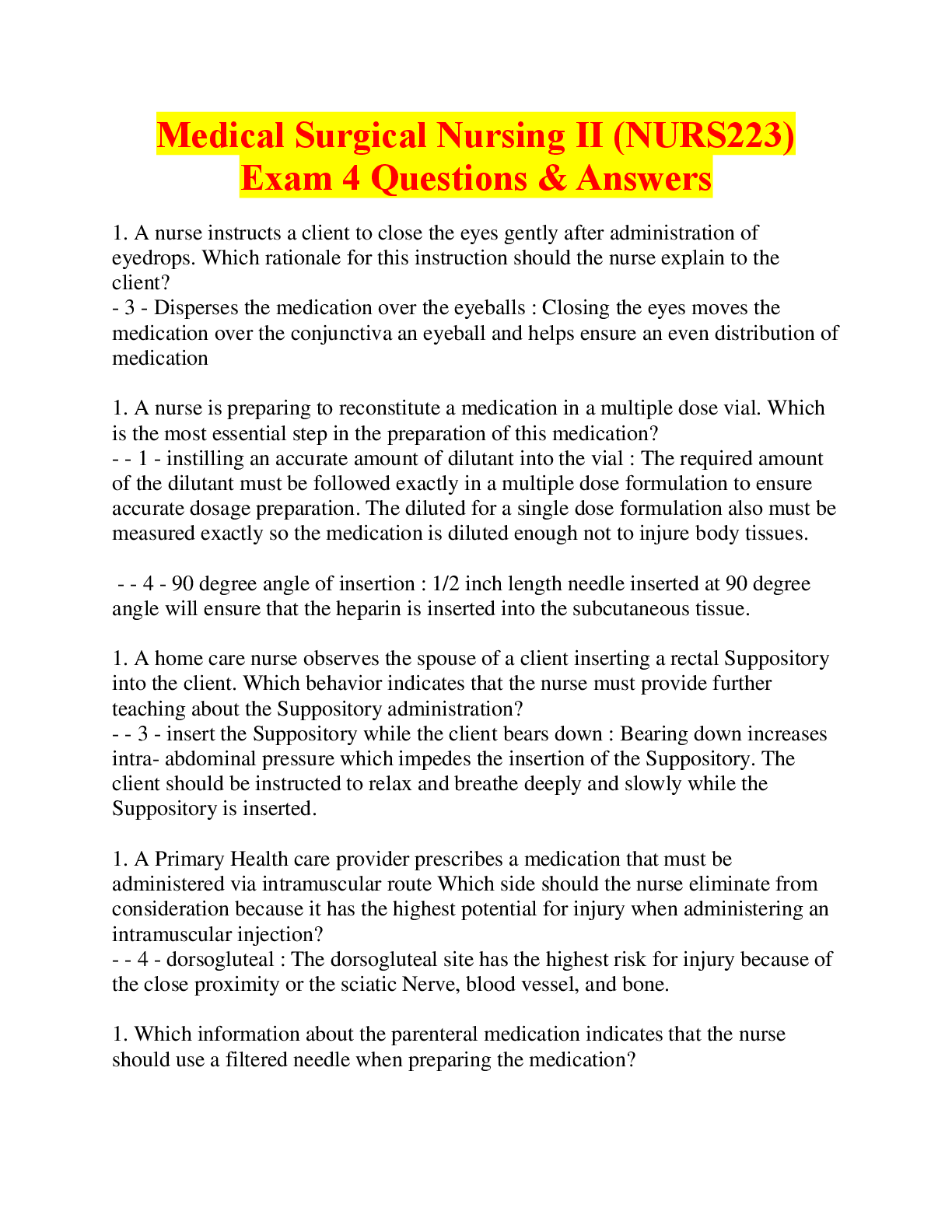
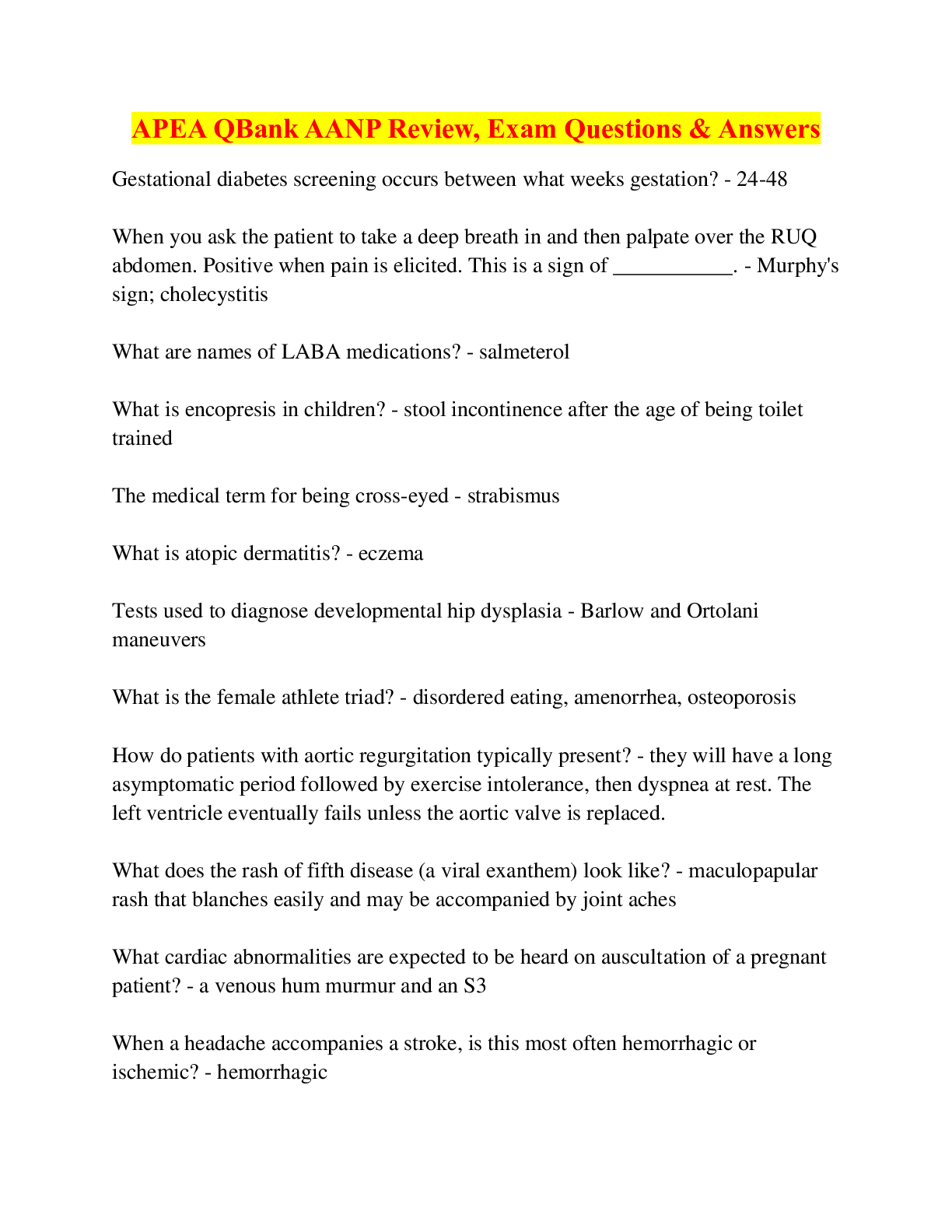
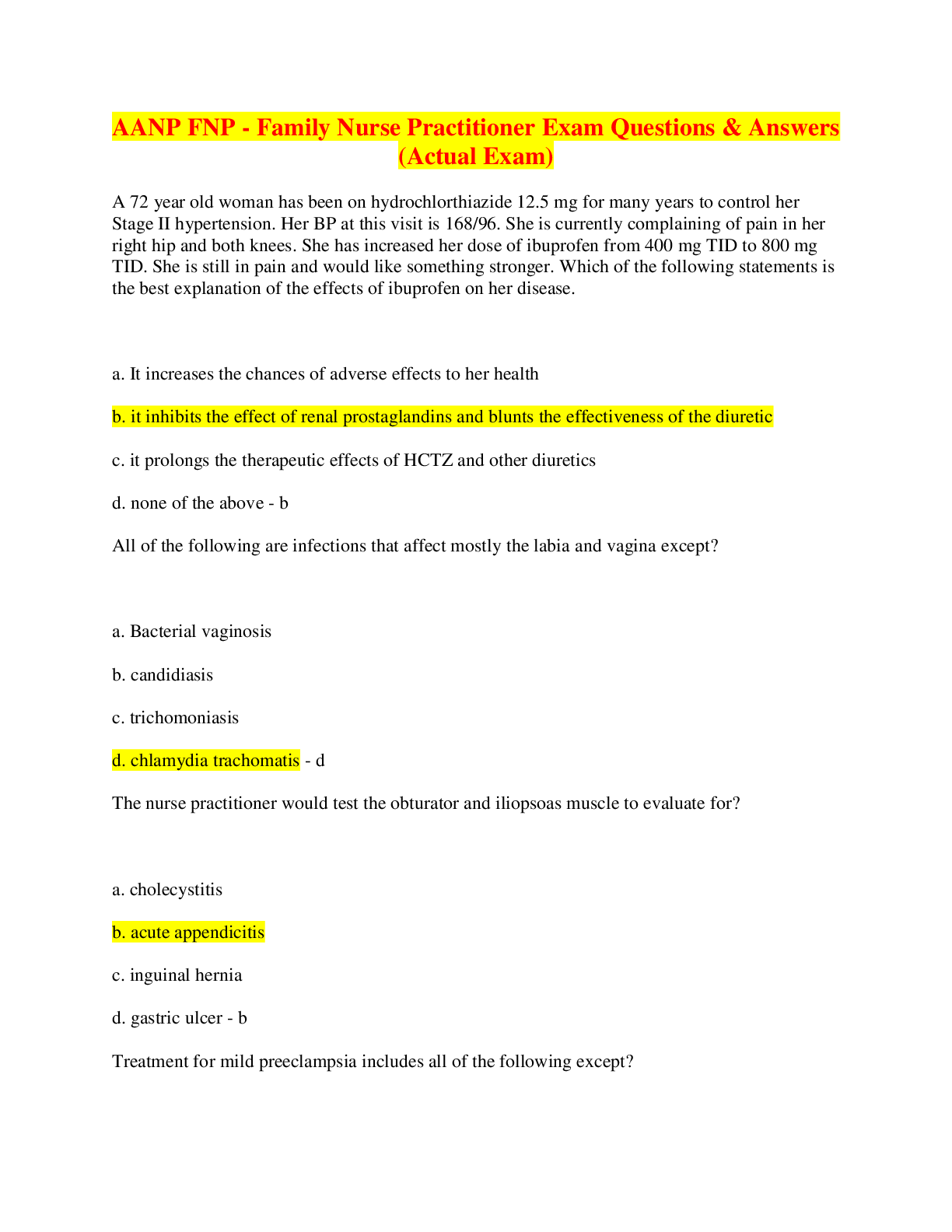
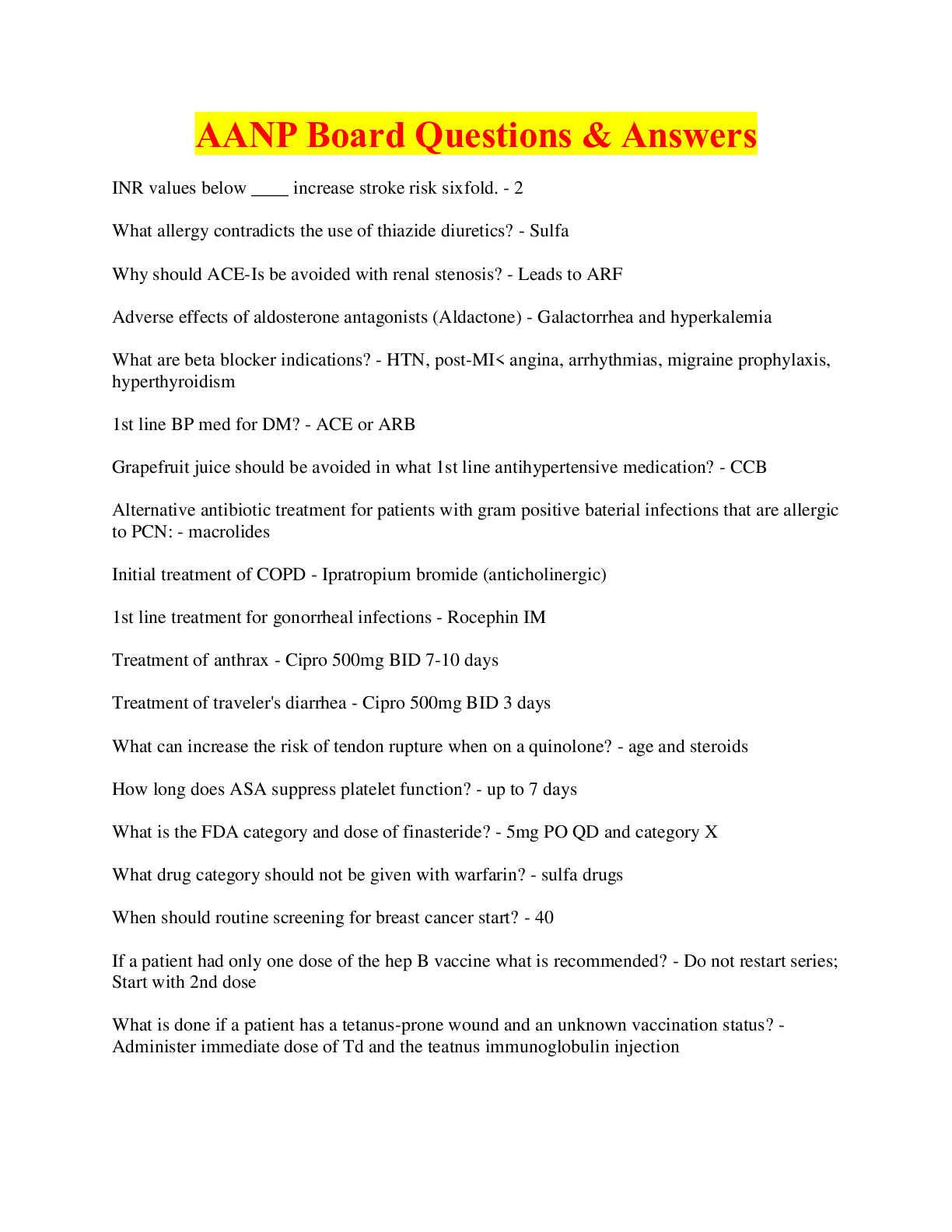
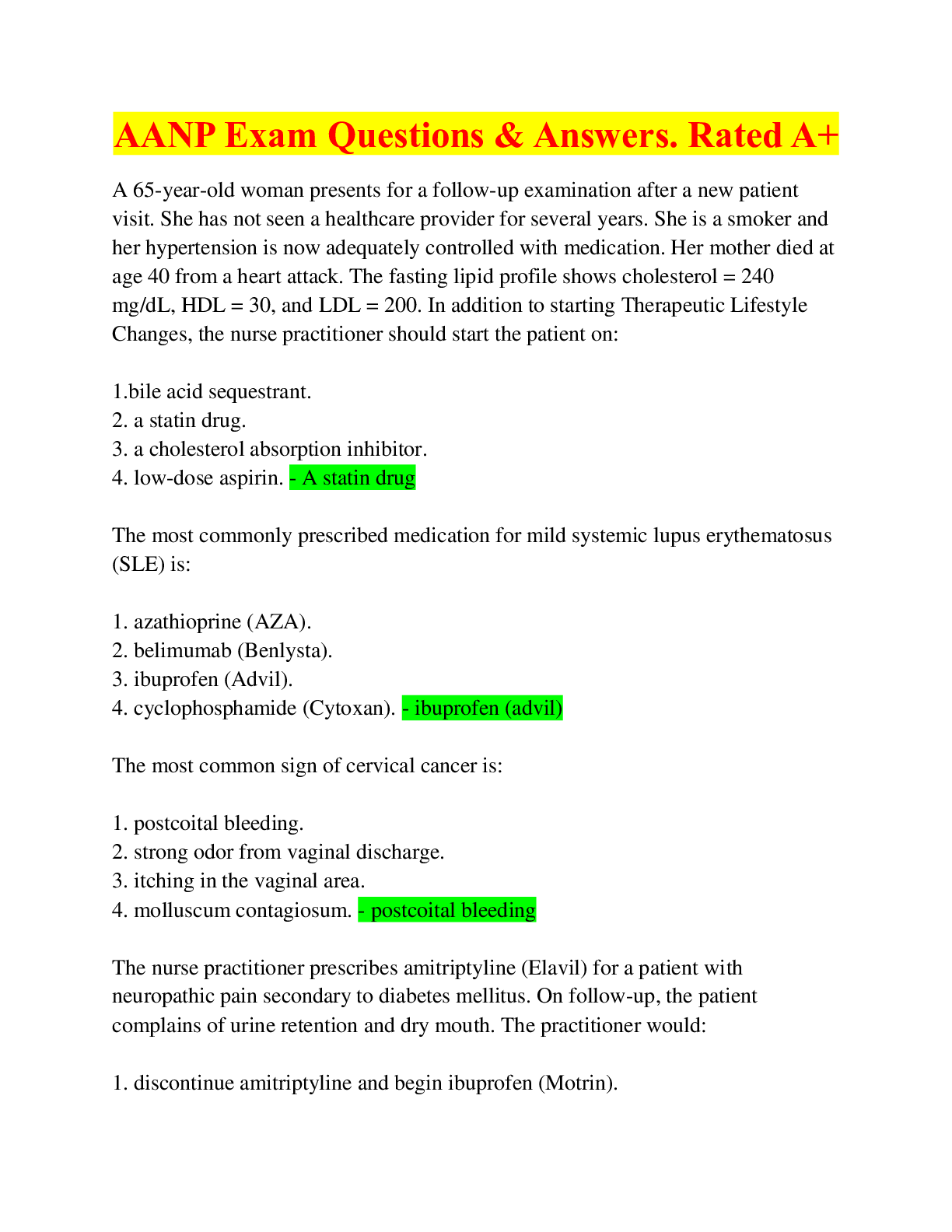
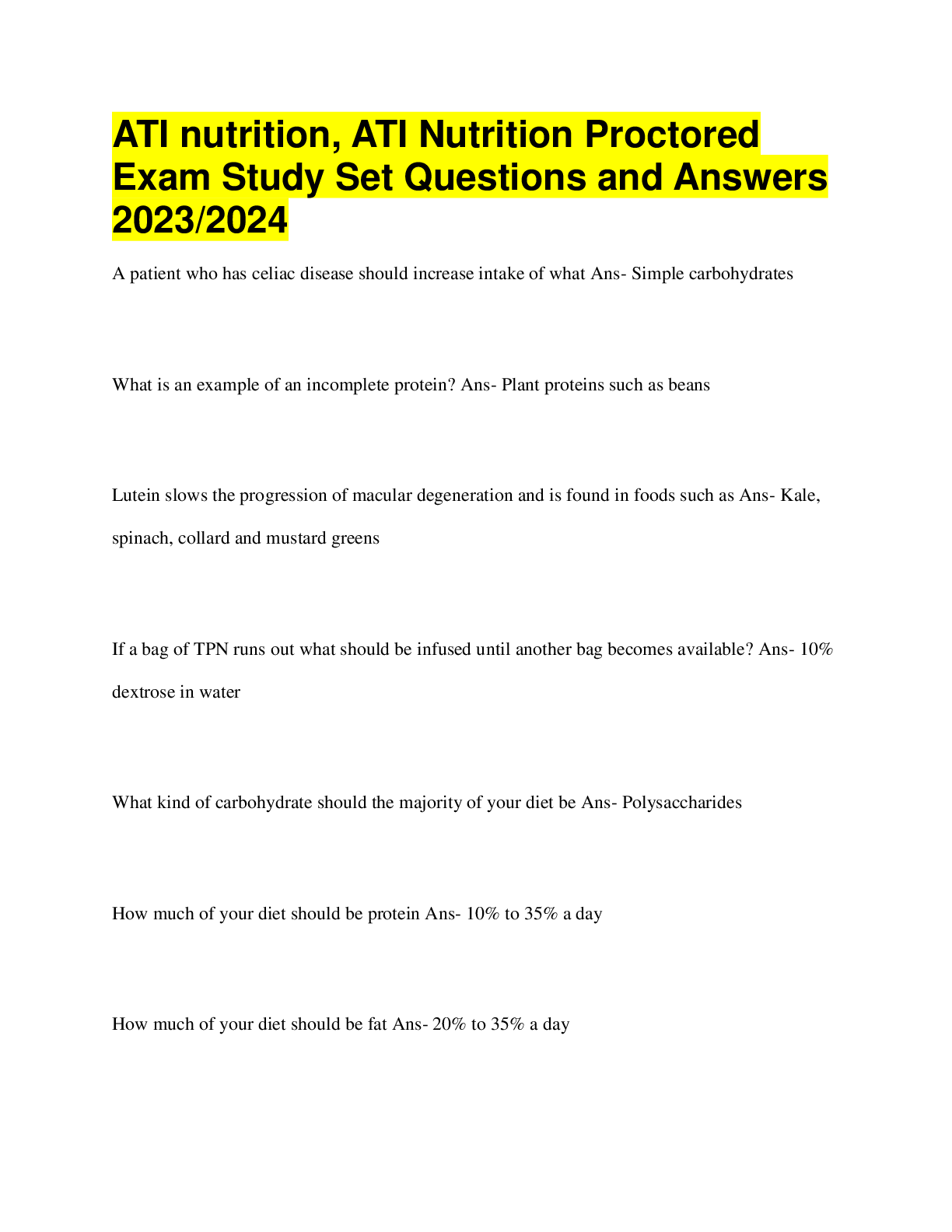
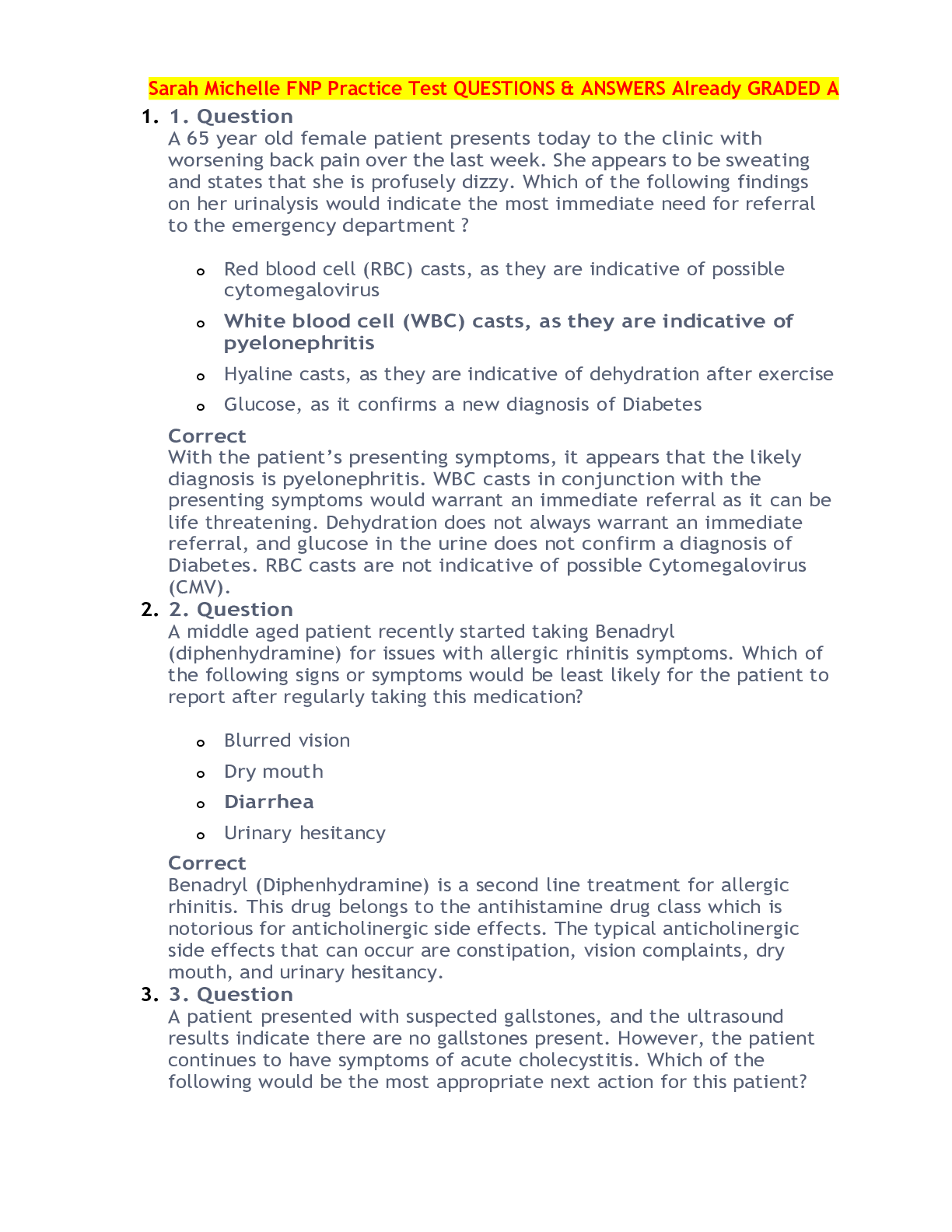
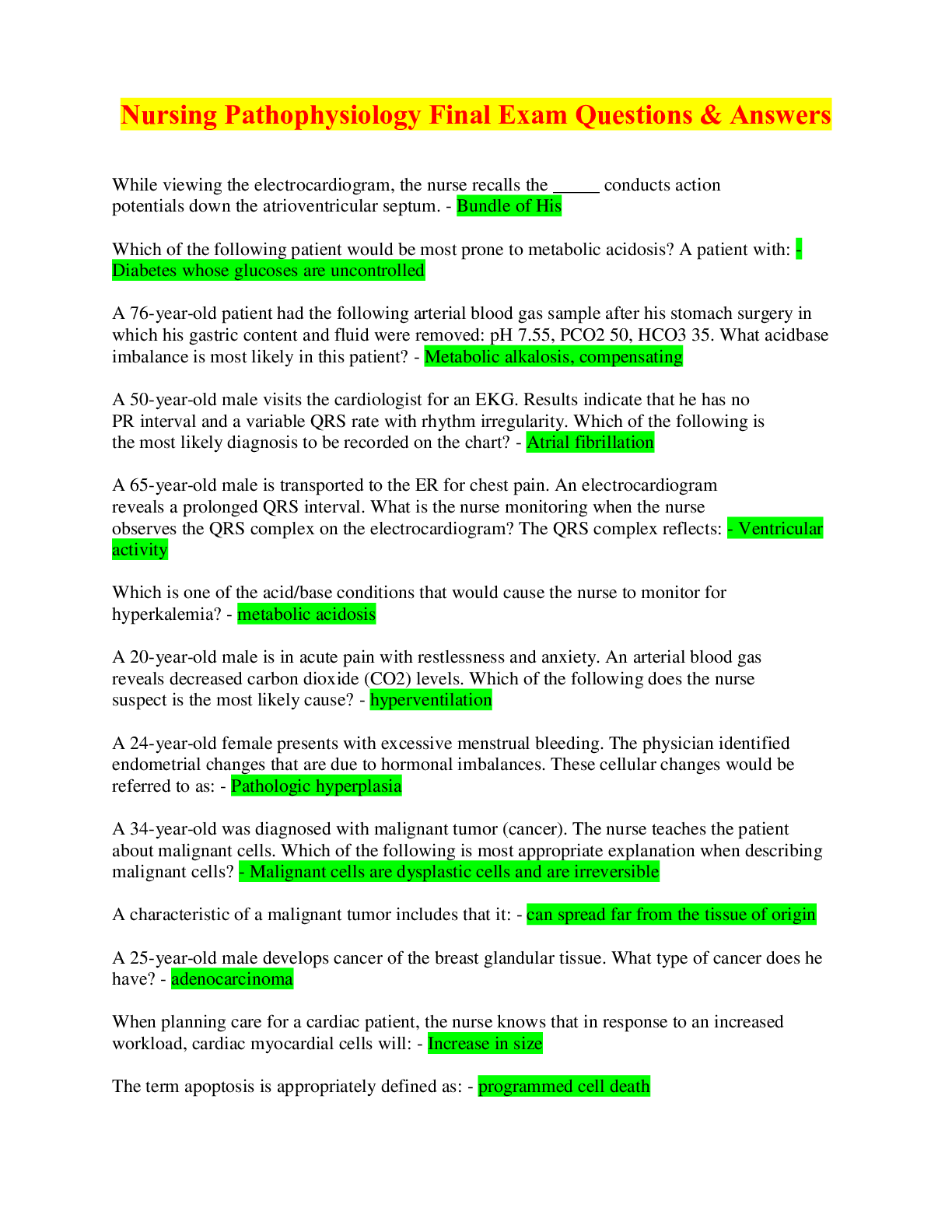
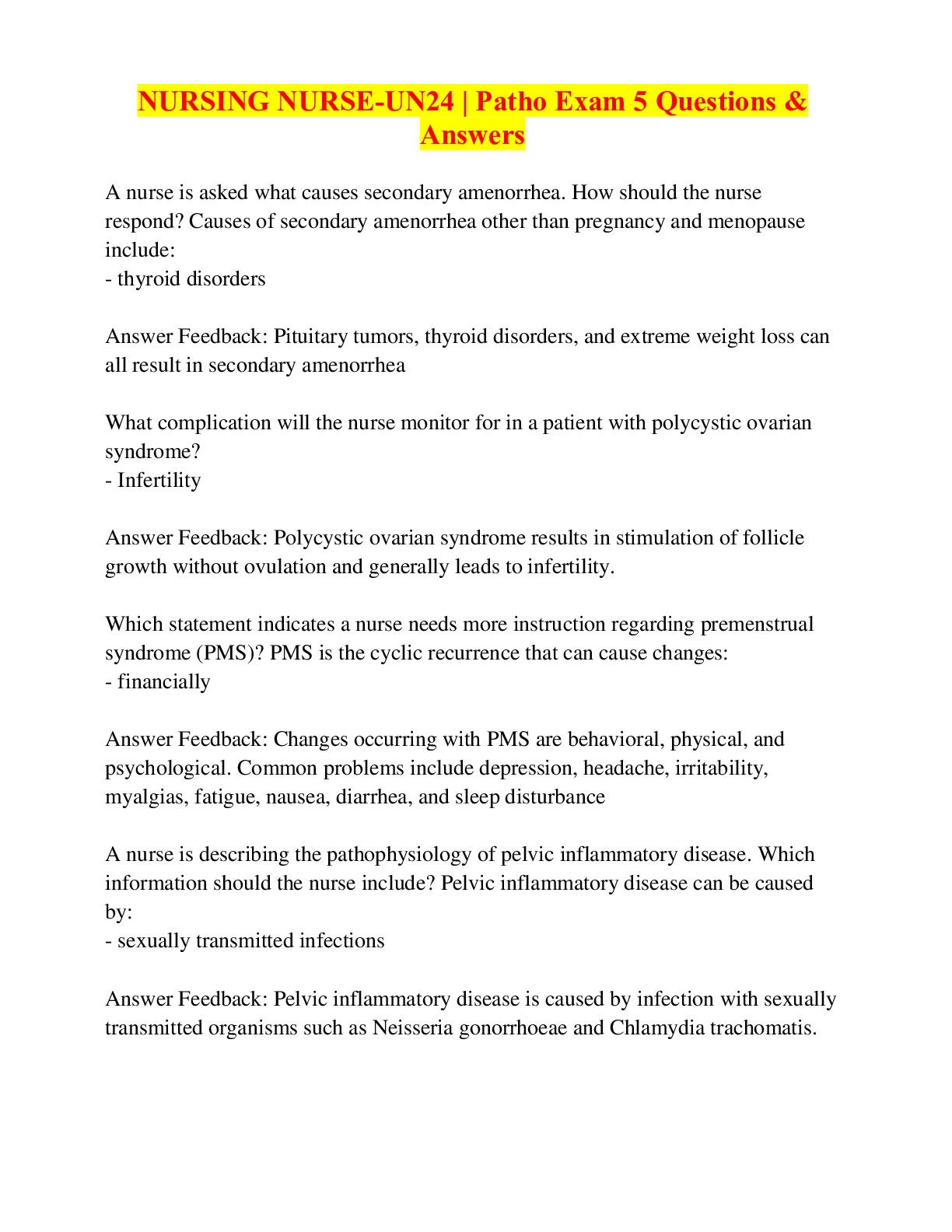

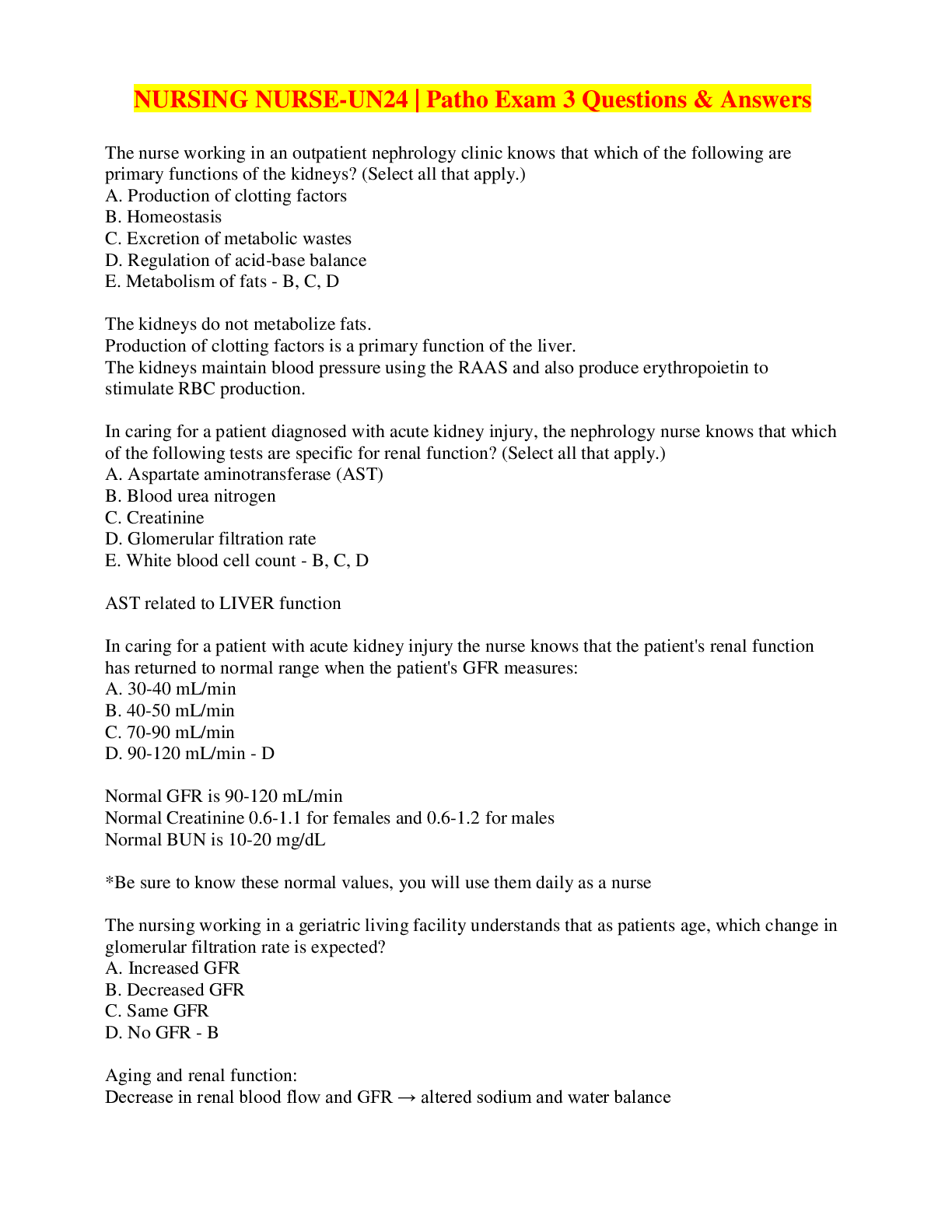
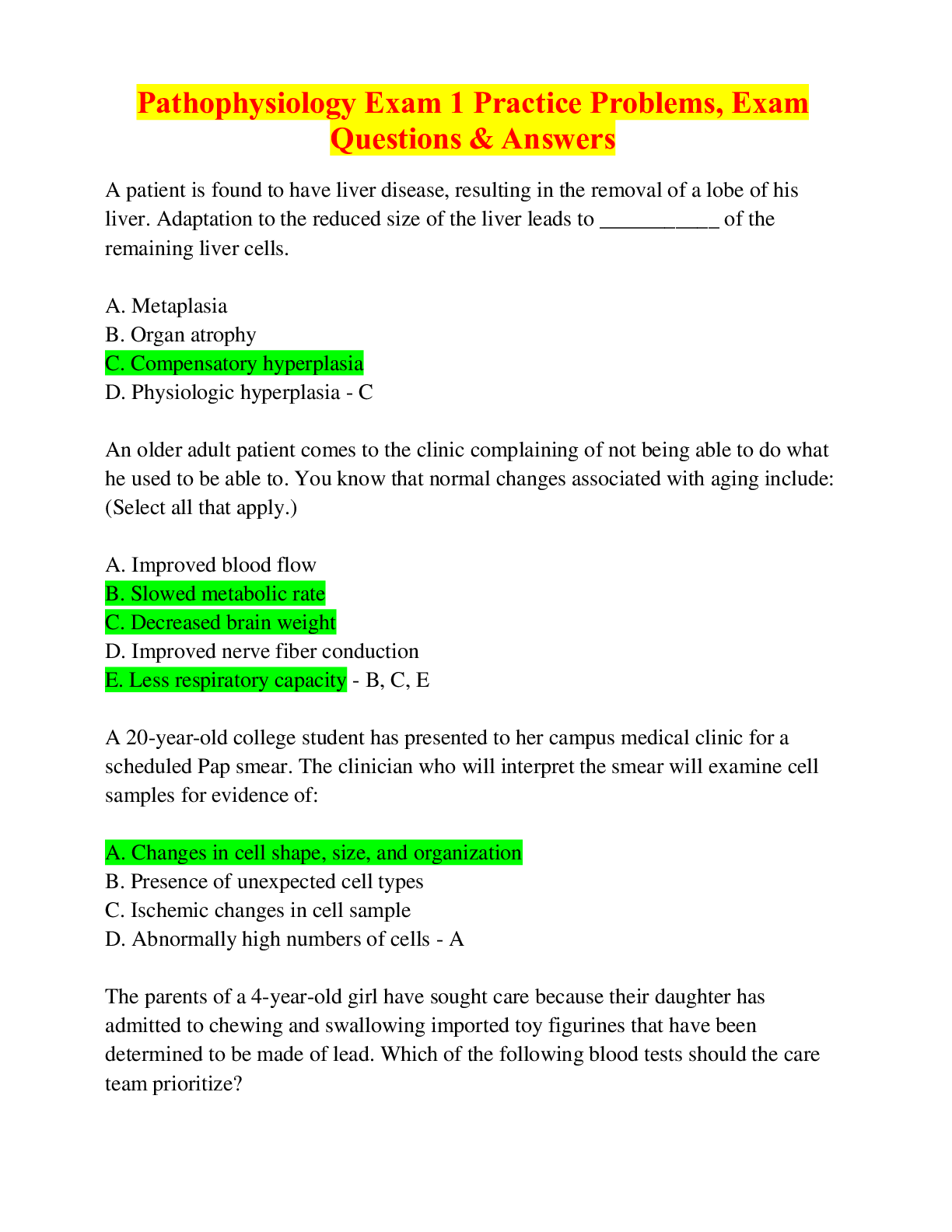
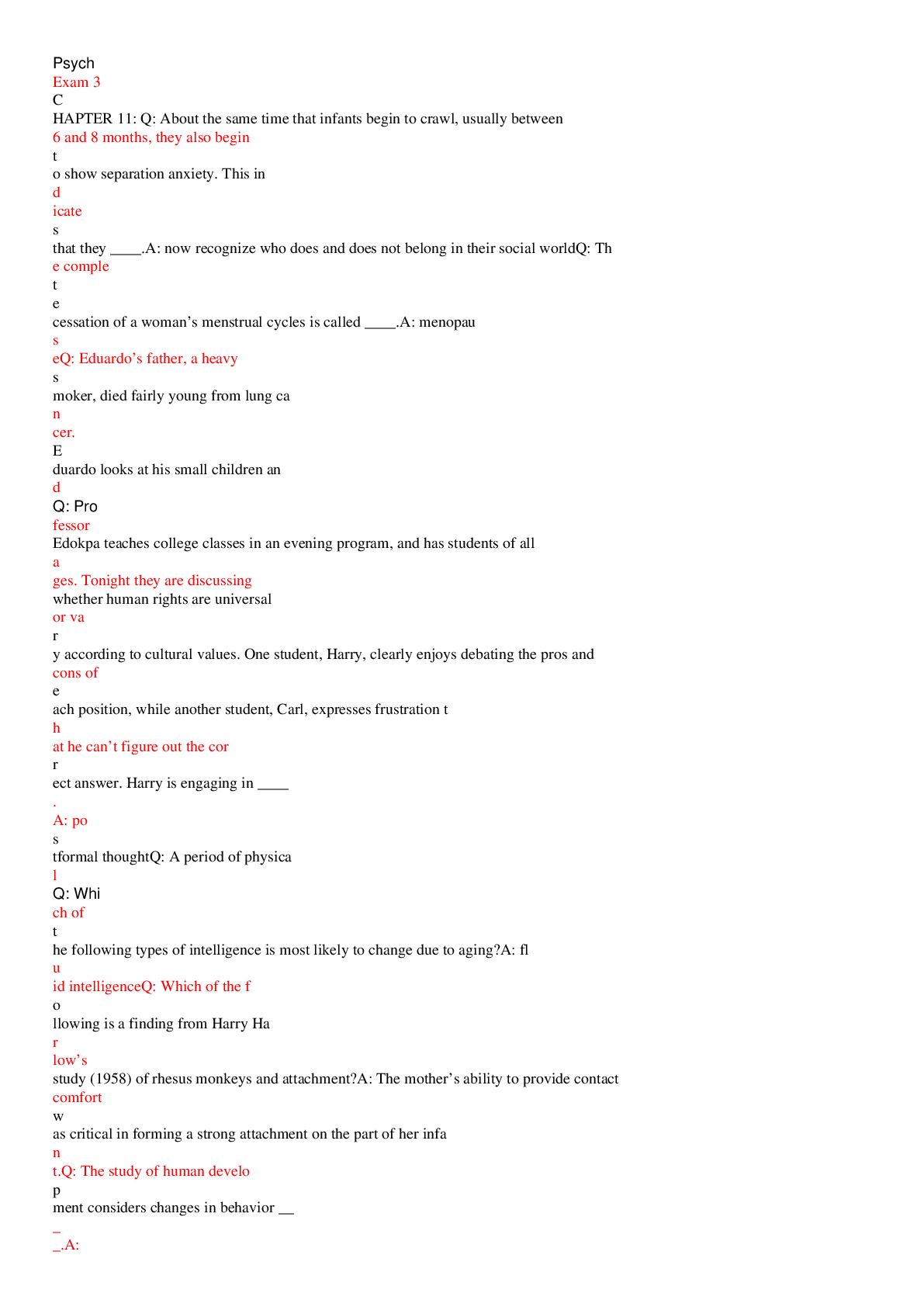



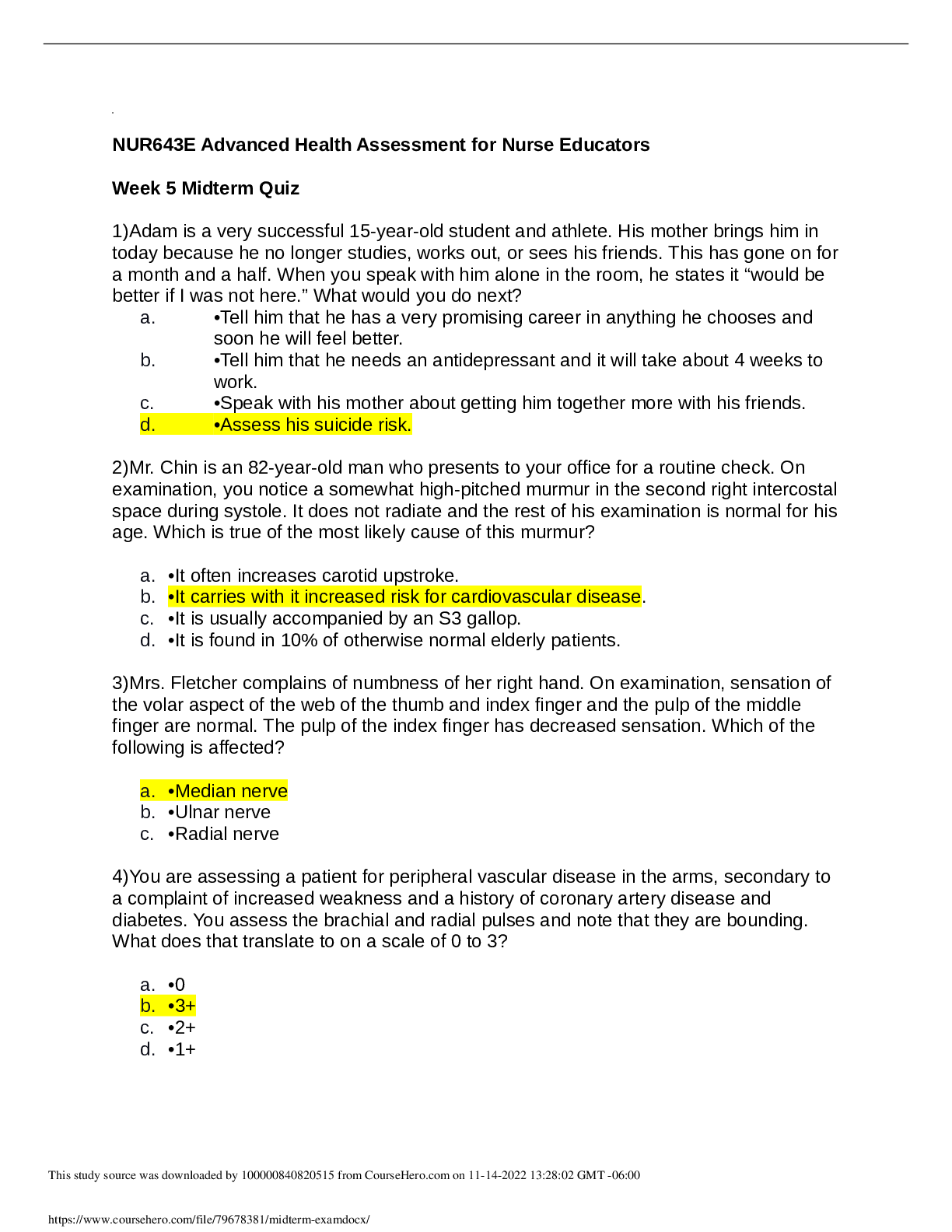
.png)





